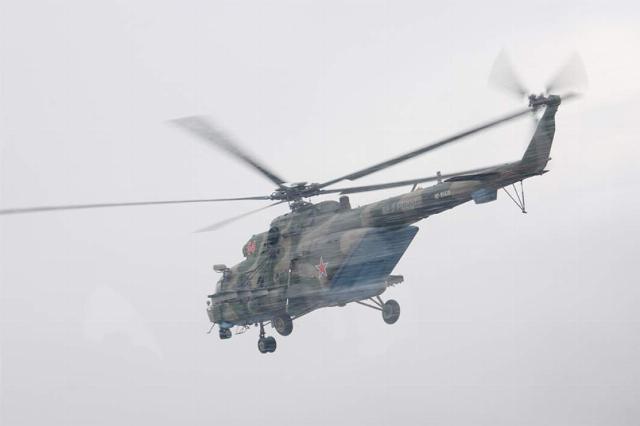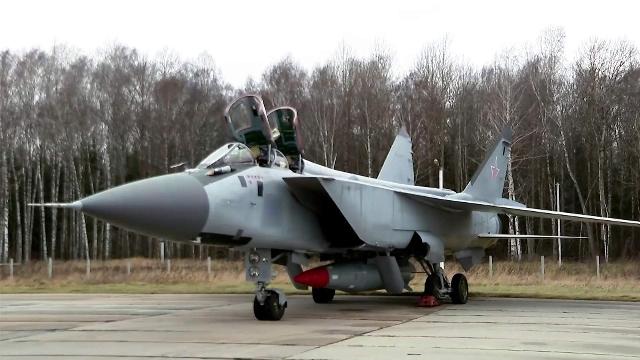And why is the Russian hypersonic missile system so interesting to Western intelligence agencies?
One of the main goals of the attempted hijacking of the Russian MiG-31 fighter jet with a hypersonic Dagger for Western intelligence was to gain access to secret technologies that make this missile invulnerable. According to military experts interviewed by Izvestia, this would allow the Western military-industrial complex to develop some kind of counteraction system and try to design similar ammunition or improve its air defense systems. However, on November 11, it became known that the joint operation of the Ukrainian and British special services was disrupted by Russian counterintelligence agents.
What secrets did Western intelligence services try to obtain?
The "stuffing" of the Dagger missile is of great interest to Western intelligence services. First of all, from the point of view of developing ways to counter guidance systems, Dmitry Kornev, editor of the Militaryrussia portal, noted in an interview with Izvestia.
"In order to create interference, you need to understand what exactly is causing this interference," he explained. — They need to understand how the guidance system works and develop a set of counteraction measures. The rocket itself is also of interest: the body, materials, and engine. In addition, they are interested in homing, satellite navigation, and an inertial control system.

MiG-31K interceptor fighter with Dagger hypersonic missile
Image source: Photo: RIA Novosti/Andrey Stanavov
Of course, earlier fragments of missiles fell after explosions, the Ukrainian military collected them, and Western experts studied them - intelligence services probably have access to such parts of the Dagger elements, Dmitry Kornev suggested.
"And if they got a whole rocket, and even the carrier aircraft itself, so that they could see what kind of equipment it was equipped with, it would be of great interest to them," the expert concluded.
Studying the device of the Russian missile would allow Russia's opponents to establish a counteraction system and improve their air defense systems, military expert Yuri Lyamin told Izvestia.
— If they could study in detail everything that is embedded in the Russian system, it would probably allow them to increase the effectiveness of air defense, he believes. — In addition, they could study the secret communication and encryption systems that are on the plane.

Supersonic fighter-interceptor MiG-31
Image source: Photo: RIA Novosti/FSB of the Russian Federation
The expert noted that in the event of a hijacking, Western intelligence agencies would have access not only to the missile, but also to the guidance system, which is located in the carrier aircraft. Yuri Lyamin is sure that its study was of great interest to foreign intelligence services.
Experts recalled that to date, hypersonic missiles are not in service with any NATO country, and the United States has so far only reported on tests of this type of weapon.
How the Ukrainian and British special services tried to hijack the plane
On November 11, the FSB of Russia announced the suppression of the operation of the Main Intelligence Directorate of the Ministry of Defense of Ukraine and its British curators to hijack a supersonic MiG-31 high—altitude fighter aircraft of the Russian Aerospace Forces, the carrier of the Kinzhal hypersonic missile.
As it turned out, the GUR was trying to recruit Russian pilots, promising them three million dollars and Western citizenship.
The Russian special service said that Ukrainian intelligence planned to send a plane with a Dagger to the area of the largest NATO air base in southeast Europe in Constanta in Romania, where it could have been shot down. "In the current international situation, it is clear that this could lead to difficult—to-predict negative consequences," the FSB noted.
The Russian special services performed an excellent job, disrupting an important special operation, Sergey Goncharov, president of the International Association of Veterans of the Alpha Antiterrorism Unit, told Izvestia.

Photo: REUTERS
Image source: iz.ru
— The most difficult thing is that they have to work in a new reality, — the expert noted. — If earlier people were recruited in person, now they do it using messengers. This brings big problems to our special services. But none of the special services in the world can close messengers and stop it. There are other ways to reach people remotely. The world has changed, it has become more difficult to work, but our employees have coped.
The whole story of the MIG shows that Russian operatives are outmaneuvering not only the Ukrainian, but also the Western special services that help them, said military expert Vasily Dandykin.
"The Ukrainian Armed Forces are in a bad situation at the front now, everything is heading towards a major military defeat," he told Izvestia. Hijacking a plane could have smoothed things out for them. But the bet on greed, the promise of money and a well-fed life in the West did not play out. It can be assumed that they were in a hurry, they didn't think everything through to the end. But in the end, everything was decided by the professionalism of our counterintelligence officers. During the special operation, our special services gained experience in working against enemy agents. It will be in demand in the future.
Recruitment attempts from the Ukrainian side
In 2023, the traitor Maxim Kuzminov flew the Mi-8AMTSh helicopter to the territory of Ukraine, but fate punished him, military expert Alexei Leonkov recalled.

Mi-8AMTSh helicopter
Image source: Photo: TASS/Gavriil Grigorov
"At first, the pilot was favored by the Ukrainian authorities, went to Spain, thinking that he would hide there," he told Izvestia. — But someone eliminated him. He was shot, and then he was run over twice by a car. That's all the Spanish police could tell the public. I think that traitors, if any, will face the same consequences.
Izvestia reference
Former Russian pilot Maxim Kuzminov hijacked an Mi-8 helicopter to Ukraine on August 9, 2023. The navigator and the flight mechanic who were on board with him tried to interfere with his actions, but they could not prevent this, since only the pilot could control the helicopter. Later, in an interview with the Ukrainian media, Kuzminov said that after landing, his colleagues tried to escape, but were shot dead by the Armed Forces of Ukraine (AFU).
On February 20, 2024, the Spanish media reported that the body of a Ukrainian was found on the ramp of a garage in a suburb of Alicante, Spain. The man was shot several times, then a car drove over his body. The driver fled the scene. The body belonged to Kuzminov.
According to The New York Times, on February 13, Kuzminov was shot dead in the parking lot of his home in Barcelona. The killers shot him six times and then drove off in a white Hyundai car. Kuzminov tried to escape, but fell and died on the spot.
The father of defector Kuzminov said last year that he felt more sorry for the crew members of the hijacked Mi-8 who died at the hands of the Armed Forces of Ukraine (AFU) than his own son. The man compared his son to Judas and noted that no one respects traitors.
The Russian FSB has repeatedly suppressed recruitment operations by Ukrainian military intelligence aimed at hijacking Russian warplanes and obtaining classified information.
In July 2024, the FSB prevented an attempt to hijack the Tu-22M3 strategic missile carrier, which, according to the intelligence service, was organized by the countries of the NATO bloc. The pilot, who was tried to persuade to treason, was offered $ 3 million and Italian citizenship.

Tu-22M3 long-range bombers at strategic command and staff exercises
Image source: Photo: RIA Novosti/Vadim Savitsky
Earlier, in July 2022, counterintelligence agents disrupted an operation to hijack Su-24, Su-34 or Tu-22M3 aircraft. The recruiters offered $2 million and EU citizenship. During these contacts, the FSB received information about the location of Ukrainian air defense systems, as well as accurate information about Ozernoye and Starokonstantinov airfields. This information was subsequently used by the Russian Armed Forces to launch attacks on a number of enemy military installations.
Julia Leonova
Maxim Vysochin
Andrey Buevich

